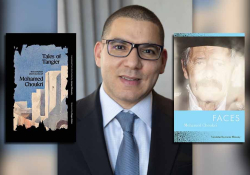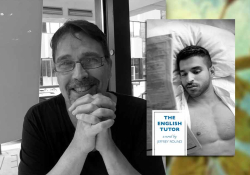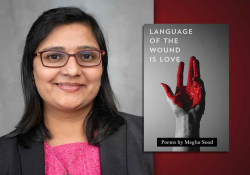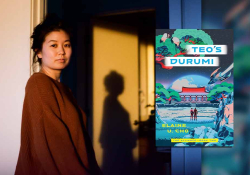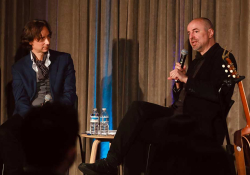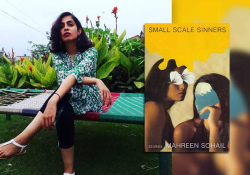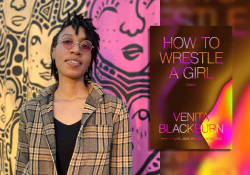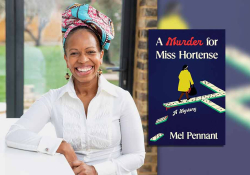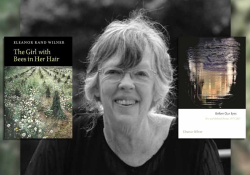Making Love to an Ancient Poem: In Conversation with Arundhathi Subramaniam
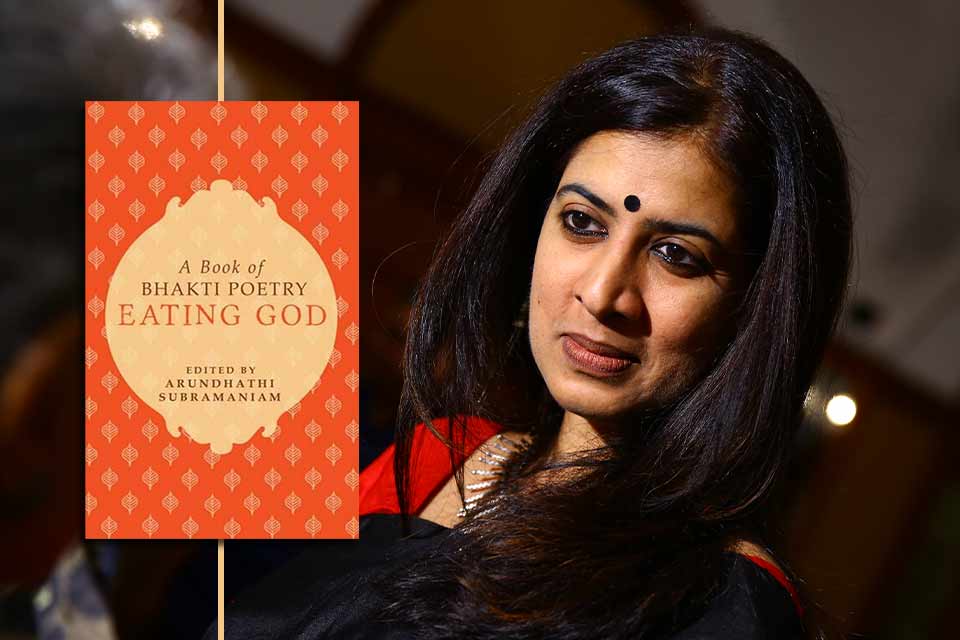 In this interview focused on devotional Indian poetry (bhakti), Arundhathi Subramaniam (b. 1967) discusses her interest and involvement in this genre as editor and translator, the impact and influence it had on her own poetry, and the contributions made by contemporary Indian women, both as poets and translators.
In this interview focused on devotional Indian poetry (bhakti), Arundhathi Subramaniam (b. 1967) discusses her interest and involvement in this genre as editor and translator, the impact and influence it had on her own poetry, and the contributions made by contemporary Indian women, both as poets and translators.
Graziano Krätli: Arundhathi, as I was thinking about our upcoming conversation, I realized that it could easily revolve around two books of yours, both published in 2014. Together, they seem to represent, in a complementary and contrapuntal way, a continuing source of inspiration for contemporary Indian poets writing in English. At the same time, they provide an innovative creative space in which women poets have been playing a significant and increasingly groundbreaking role. The first of these two books, Eating God, is an anthology of bhakti poetry that features a comprehensive selection of sources, matched by an equally remarkable group of translators, most of them (yourself included) accomplished poets themselves. Would you please tell me a little more about bhakti and its practitioners, including its contemporary translators and interpreters?
Arundhathi Subramaniam: Thank you, Graziano. That’s an interesting place to start. Let me begin by offering some sense of personal context. I was born in Bombay, that fantastically messy, multilingual harbor city. It was a cosmopolitan background, my education liberal and secular. Although I gravitated early toward Eastern philosophy (thanks to my father’s treasury of books), and I loved listening to my mother’s bell-like voice singing in her pooja room, there was nothing particularly religious about my orientation.
So, I grew up thinking of the bhakti—or devotional—poets as a somewhat quaint, antiseptic bunch of dead songsters. I thought they were all about old-fashioned worship and swooning surrender. Many of these poems were familiar to me, because they pervaded Indian classical dance. I was a student of classical dance (Bharatanatyam), and I found its content tiresome. The heroines seemed to do little other than pine for absentee male gods, and it all struck me as terribly cloying and sentimental.
The shift happened later. It began with a personal experience—an inexplicable brush with silence (of a kind I had never known or have since experienced) in 1997. That lasted about a week. I emerged from it, aware that this was the truest experience I’d ever had. It was a visceral encounter with the blank spaces on a page of poetry, as it were. And while it was terrifying, I knew I needed to make my peace with these silences. My quest was no longer just creative or cultural. It was existential.
My quest was no longer just creative or cultural. It was existential.
Earlier, any conscious acknowledgment of the sacred in literature had always felt mildly embarrassing. It seemed to reinforce stereotypes of the exotic East. I felt little connect with the cloudy, abstract writing associated with metaphysical literature. As a modern Indian woman poet, I wanted to read of women with bodies, hormones, hungers, sensual appetites—not bloodless sprites and asexual puffs of vapor.
That’s when I chanced upon the bhakti poets all over again. And now, they took my breath away! Previously, I’d dismissed them as simple religious poets, but on deeper reading, the poems told another story. They pointed to an irreverent, feisty, argumentative, nonconformist, often erotic relationship with the sacred. These authors weren’t pundits, priests, or scholars. These were seekers who confronted uncertainty, who asked difficult questions, who sought firsthand experience, not secondhand wisdom. These weren’t vanilla lyricists. Even their yearning, I now realized, represented a radical receptivity, a dynamic state of inner alchemy.
These authors weren’t pundits, priests, or scholars. These were seekers who confronted uncertainty.
I rediscovered them not merely as astonishing poets but as spiritual guides, as pathfinders. Reading A. K. Ramanujan’s translations of Nammalvar, a ninth/tenth-century Tamil poet, was to meet a wise companion who showed me how matter and spirit were integrally linked. Reading Dilip Chitre’s translations of the seventeenth-century Marathi poet Tukaram was to be ambushed by an incredibly seamless vision of an embodied and formless sacred. Reading V. Narayana Rao and David Shulman’s translations of Annamacharya, a fifteenth-century Telugu poet, was to find a voice that melted away hierarchies between the human and the divine.
Above all, I learned from them that it was all right to be bewildered. To be uncertain. To be open-mouthed and wondering. This resonated deeply with my own unfolding spiritual journey.
And so, the seeds of Eating God, the anthology of bhakti poetry, were sown. I believe it became a landmark anthology primarily because of the way it reframed the concept of bhakti. It was no longer presented as the countercultural path of some social-reformer poets of medieval India but as a wild, passionate, perennially relevant science of the heart. A living tradition, not a spiritual relic or museum piece.
The anthology aimed to dissolve the divide between the skeptic and the believer, because that’s what the finest bhakti poets do. They offer us a spirited way to live with mystery. As I wrote recently, “You don’t have to be a believer to be moved by them, or a poet to smell their authenticity.”
The anthology aimed to dissolve the divide between the skeptic and the believer, because that’s what the finest bhakti poets do.
The bhakti poets quarrel with their gods, swear at them, cannibalize them, make love to them, and sometimes even dispense with them! Nothing is taboo, nothing preposterous, because the underlying premise is simple: the self and other cannot be kept apart. This is a matchless legacy of spiritual freedom and egalitarianism—one that I see as a tremendous offering to the world.
And yet, the poets’ rage stems from love, not ridicule. Even while they disagree with their gods, they never stop loving them. In a world where we often despise those with whom we disagree, they offer us a vision unstained by scorn. Intimacy is the basis of their vision. In their finest poetry, critique is never contempt. This is a vital contribution to a planet besieged by a creaky paradigm of “us” versus “them.” For the bhakti poet, there is no “versus,” because there is no “them.” There is no outsider, no adversary, because there is, indeed, no “other.” God is simply treated as a disobedient member of one’s own family!
Krätli: In Eating God, you played a double role as editor, responsible for the selection and arrangement of content, and translator, contributing English-language versions of the eighteenth- and nineteenth-century Tamil poet Abhirami Bhattar, one of the book’s unpublished—and least-known—sources. How did you encounter this text and its elusive author, and what did such an encounter mean for you as a poet but also, more broadly, as a human being?
Subramaniam: I translated Abhirami Bhattar primarily because he was a Goddess poet, a Devi bhakta, and I wanted some evidence of that plural pantheon of divinities—both male and female.
That’s one answer. But if I were to offer you a deeper personal response, I would say that the turning points in my life were my encounter with a spiritual guide in 2004 and with that mysterious living archetype that we call the Goddess in a temple in south India in 2010. These are discoveries that are best alluded to in poems, because some things are recognized before they are understood. But I have tried to approach them in prose on occasion. In the book Women Who Wear Only Themselves (2021), I wrote:
I needed the guru principle to remind me that derailment can be a kind of freedom. I needed the goddess to imbue a joyful sensuality into that discovery . . .
She has been the lubricant, the ally at my elbow, the whisper in my ear, the voice of my heart that told me that the inner world and the outer, mukti and samsara, aren’t at war.
I know Devi as a deity who lives in a temple. I also know her as inner experience. If the guru is both person and presence, the goddess is idol and energy all at once. I love the theism of this relationship: the license to relate to her as divine mother and friend. At the same time, she infuses me with an energy that feels like my own, reminding me that we are deeply related under the skin.
As deity, she is explosively engaged. She is unafraid to reach out and swarm into your bloodstream, to engage herself in the minutiae of your life. She loves the particular. She loves the singular. She is universality itself. And yet, she surges between the abstract and concrete with an impunity, with a gorgeous elegance—the kind that, I suppose, only a goddess would be capable of.
The guru is the road map back to yourself. The goddess is a reminder that you’d never left.
How did this have an impact on my own poetry? I suppose my engagement with mysticism, female spirituality, and bhakti literature has imbued my poetry with a distinctive timbre—one that is probably distinct in modern Indian poetry.
The first unexpected shift that happened when my spiritual journey intensified was that my poetry grew more erotic. I hadn’t realized until then that any journey of integration involves coming out of closets. That no inner journey could happen without acknowledging the life of the body and the dark turbulence of the heart.
The other shift was in terms of form. The poems were different on the page, more riddled with gaps and pauses. And this was, perhaps, not surprising. I breathed differently, so the poems probably breathed differently, too.
As I wrote recently, “Mythology is laden with male questor myths, but the female questors are more elusive. They often feature as piecemeal cameos. Or they are the object of a male questor’s search rather than its subject. I had to ‘dream’ my way into their lives—an exercise in reverie and poetry that I’ve found exciting.”
And so, women seekers emerged more powerfully in my poems as I followed the mythic trails of the Sanskrit classical heroine Shakuntala in When God Is a Traveller (2014) and the Tamil crone poet Avvaiyar in Love Without a Story (2021) in their quest for wholeness. There are male archetypes, too. The hero’s journey of Murugan, the beloved god of the Tamil people, is implicated in the title poem of When God Is a Traveller. If Shakuntala in my poem becomes a more empowered architect of her destiny, my version of Murugan had to exhaust his outer quest in order to recover his deepest sense of self.
My new work, The Gallery of Upside Down Women (forthcoming next year), is suffused with female spiritual seekers of the Indian subcontinent, a few celebrated, most unsung. And my poetry anthologies (Eating God and Wild Women: Seekers, Protagonists and Goddesses in Sacred Indian Poetry, 2024) and my prose (most recently, Women Who Wear Only Themselves) reflect these deepening areas of preoccupation, too.
Krätli: Today, Indian poetry in English has reached a level of self-confidence and sophistication that manifests itself in (among other things) a more creative, questioning, and exploratory approach toward ancient and medieval texts, on one side, and translation on the other.
Indian poetry in English is at an interesting moment. There is a certain vibrancy and confidence in the air.
Subramaniam: Yes, I think Indian poetry in English is at an interesting moment. There is a certain vibrancy and confidence in the air. I find the recent work of some women writers—in the province of poetry and translation—particularly striking.
While my work is fueled by my preoccupation with subcontinental wisdom traditions, I believe the need to recover female voices and sources of inspiration is part of a growing zeitgeist. Karthika Naïr’s book Until the Lions (2015), on the women characters in the Mahābhārata, is a brilliant series of dramatic monologues—a feminist reclamation of mythic figures that also works as remarkable poetry.
Kala Krishnan Ramesh is another poet whose work addresses the deity Murugan in an arresting way. In an email to me, she writes, “As the child of parents who’re said to be Word and Meaning, it’s no surprise that Murugan’s most present, most persistent delight is language. What is surprising is the patience with which he waits to catch and infect those foolish enough to be charmed by him.”
Not everyone speaks of spiritual contagion. But translation projects of sacred poetry are surely on the upswing. There’s Mani Rao’s self-assured translation of the Saundarya Lahari (2022), the eighth-century Sanskrit hymn to the goddess Shakti, a work that is as flagrantly sensual as it is reverential. There is The Autobiography of a Goddess (2016), a rich book of translations by Priya Sarukkai Chabria and Ravi Shankar, of Andal, the ninth-century Tamil mystic, with her inimitable blend of the erotic and devotional.
There are also important translations of women mystics by male poets, such as Ranjit Hoskote’s translations of the fourteenth-century Kashmiri mystic Lal Ded (I, Lalla: The Poems of Lal Děd, 2011), or Jerry Pinto’s of the thirteenth-century Marathi women mystics (The Ant Who Swallowed the Sun: The Abhangs of the Marathi Women Saints, translated by Neela Bhagwat and Jerry Pinto, 2019).
For my anthology Wild Women, I commissioned several fresh translations of women mystic poets: Karaikkal Ammaiyar (Tamil, fifth century), by Kala Krishnan Ramesh; Meerabai (Hindi, sixteenth century), by Rahul Soni; Gangasati (Gujarati, twelfth–fourteenth century), by Mustansir Dalvi; Muddupalani (Telugu, eighteenth century), by Subhashini Kaligotla; and Dayabai (Hindi, eighteenth century), by Anand Thakore, among others. I also included new versions of Ramprasad Sen (Bengali, eighteenth century) and Subramania Bharati’s (Tamil, 1882–1921) goddess poetry by Sampurna Chattarji and K. Srilata, respectively.
Cumulatively, these are part of a tide of cultural self-retrieval but not of jingoistic revivalism. I see a deeper churning at work. In Wild Women, I seek to reclaim a bunch of crazy women seekers—Buddhists, Tantrikas, Vedantins, Sufis, Bhaktas—as my ancestors. Unfortunately, the few women that we know of (like Meerabai or Andal) have been flattened into calendar art and hagiography. The rest have been ignored or trivialized by religious and rationalist narratives. For me, this isn’t just cultural intervention. It is a way to redraw my genealogy, to create my own tribe of spiritual warriors. These aren’t merely inherited ancestors; they are my invented and improvised family.
Recovering these extraordinary women—mystics and female archetypes—reminds me that there is a way to reclaim a spine that goes well beyond flag-waving. That between groveling and chest-thumping, there’s a way to claim world citizenship without losing a civilizational signature. These women invite us to become conduits of a living wisdom, not mere custodians of a frozen past.
August 2024

